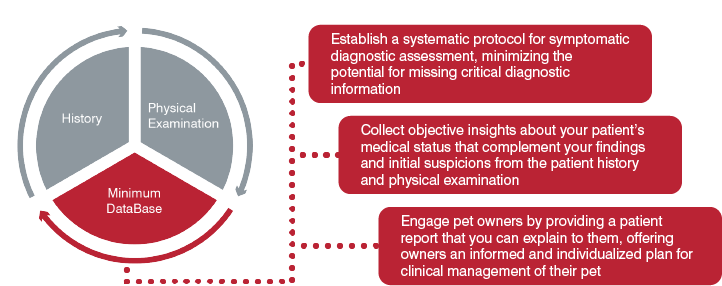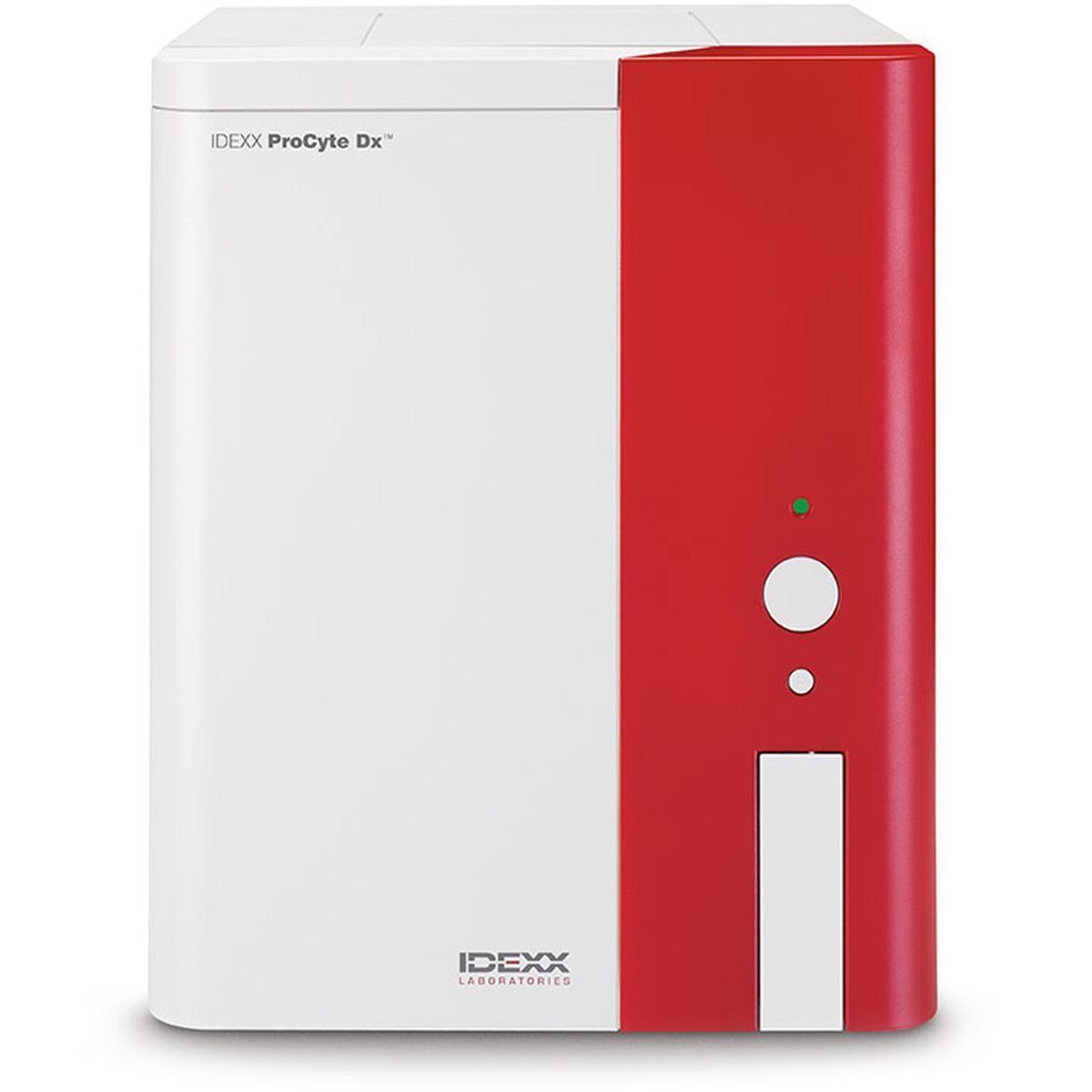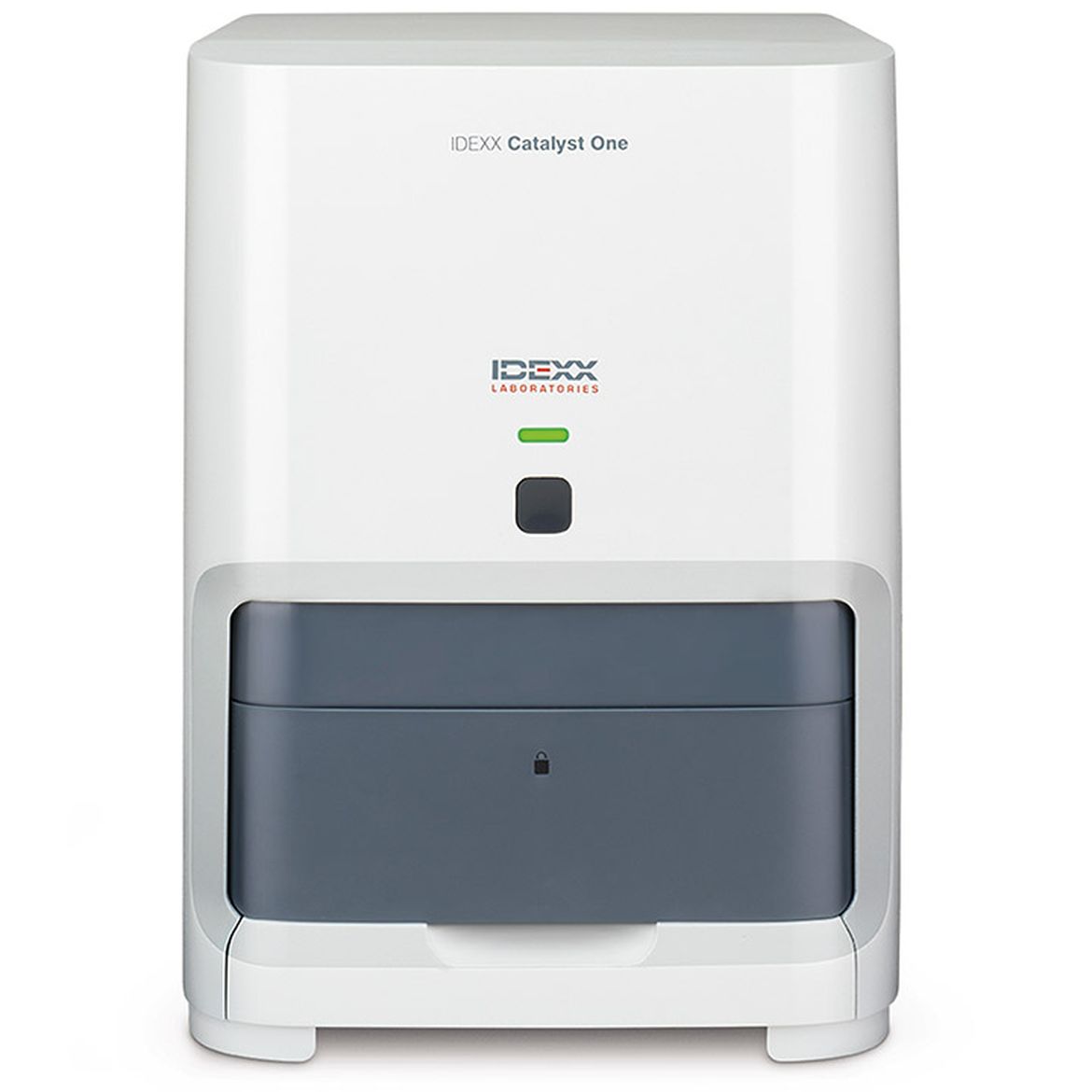Minimum DataBase
Evolve your symptomatic patient assessment
Integrate the tests of the Minimum DataBase for a complete picture of your patient
Animals are masters at masking any signs of illness or weakness. Combine this with their inability to speak and tell us what is wrong, and it is easy to understand why it can be challenging to make an accurate diagnosis in veterinary medicine. Some common diseases also give rise to similar clinical signs and symptoms, which can present a further challenge in reaching a confident diagnosis.
Whether your symptomatic patient is very sick or just vaguely ‘under the weather’, diagnostic testing is thus frequently recommended to fully evaluate your patient and counter these inherent obstacles.
Evolving your symptomatic patient assessment to integrate the tests of the Minimum DataBase (MDB) alongside the patient history and physical examination brings many benefits. By consistently running the Minimum DataBase as part of your symptomatic patient assessment, you can:

Used alongside the patient history and physical examination, the Minimum DataBase includes the core diagnostic tests needed to consistently achieve an accurate diagnosis and initiate treatment where applicable or, where necessary, to pursue additional follow-up diagnostics. It provides you with a holistic view of organ systems, and consists of four integral components that should always be performed together: Complete Blood Count, Complete Chemistry, Complete Electrolytes and Complete Urinalysis.
The Minimum DataBase allows you to pinpoint interdependencies in organ systems, and it also helps to determine why your patient is ill.
Get the full picture - Minimum Database
Complete Blood Count
For general information about anemia, dehydration, inflammation, and infection
Complete Chemistry
For specific information about the underlying health of the kidney, liver, and pancreas
Complete Urinalysis
For assessment of kidneys and urinary tract
For accurate interpretation of Complete Blood Count, Chemistry, and Electrolytes
Complete Electrolytes
For critical information about the metabolic status of the patient


